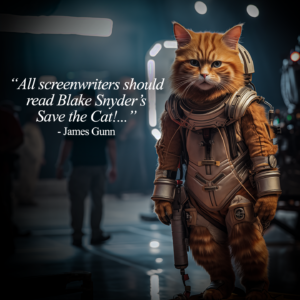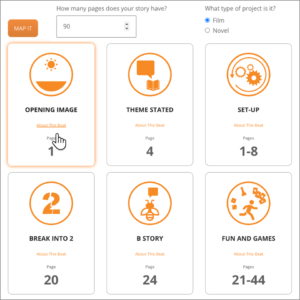
 Can an antagonist change his or her mind and side with your protagonist? Why might this occur — and how do you make it work?
Can an antagonist change his or her mind and side with your protagonist? Why might this occur — and how do you make it work?
Master Cat Naomi Beaty cites examples from Bridesmaids and Gone Girl in this informative lesson.
Podcast: Play in new window | Download
Subscribe: Apple Podcasts | RSS
Naomi Beaty
Naomi Beaty, a screenwriter and script reader in Los Angeles, teaches our online beat sheet screenwriting workshops, our in-person weekend intensive workshops, and hosts our STC! podcasts. Visit her online home and get access to the new library of downloadable screenplays and screenwriting resources.
5 Comments
Leave a Reply Cancel reply
You must be logged in to post a comment.










Really enjoyed this podcast. I’m working on a script right now, and this subject lends itself to one of my main antagonists. Actually, I feel my script draws inspiration from David Cronenberg’s THE FLY. I feel like Stathis from THE FLY could also be seen as an antagonist that switches sides.
Thanks for the insight!
Matt
Thanks so much, Matthew! Glad you found it useful. And yes – I think you may be right about The Fly. I haven’t seen it in forever, but what you’re saying sounds right. Good luck on your script!
I enjoyed this podcast very much. It made me stop and think about the prospect of an antagonist turning from bad to good in a story. I believe the short answer is yes.
But there’s a more important question we should ask: How will the antagonist switching sides affect the protagonist as she struggles with her “blind spot”, or longstanding misbelief while she pursues her greatest goal? Will it push her closer to her goal, or will it drag her further back?
One key element to consider is that every other character, including the antagonist, plays a part in the story that impacts the protagonist’s overarching agenda. Even though the antagonist will carry out her own agenda throughout the story, the antagonist’s agenda must be crafted to ultimately affect the protagonist’s agenda, for better or worse.
After all, the protagonist is the sun in the story’s universe. Everything revolves around her.
In order to make the antagonist switch work, we ought to think about how it will bring the protagonist to what I call the “Divine Aha Moment Of Clarity”, when the shard of glass is pulled out of her, and she overcomes the misbelief that’s been sabotaging her efforts throughout the story.
Also, we should bear in mind how the side switch affects the antagonist, concerning the battle with her own “blind spot” and the pursuit of her goal. And how it might bring her to a “Divine Aha Moment Of Clarity”, which would probably come sooner for the antagonist when she switches sides.
As long as a writer knows what the protagonist’s and antagonist’s greatest goals and longstanding misbeliefs are, and how the side switch will affect them, a writer can make it work quite well in a story.
Thanks so much for the thoughtful comment! Great points here to prompt further discussion. I’m sure you and I could go on for hours on this topic alone! :)
No doubt. We could go deep down into the rabbit hole on this topic for sure. Perhaps some of the points could become material for future podcasts? :)
Thank you for your continuing work with Save The Cat. The resources provided on this website help writers like me in so many ways concerning story craft.